“Coffee Beans Uncovered: The Ultimate Guide to Types, Roasts & Flavors”


When it comes to coffee, the beans are the heart and soul of every cup. Whether you’re a seasoned coffee lover or a beginner, it’s important to understand coffee beans. Knowing their variations can drastically improve your brewing experience.
Each factor plays a significant role in determining the flavor of your coffee. The type of bean and roast level also influence the strength of your coffee. In this guide, we’ll explore the different types of coffee beans. We will examine how roasting affects the flavor. You’ll learn how to select the perfect beans for your brewing method. Let’s start our journey to coffee beans uncovered.
Table of Contents
How were coffee beans Uncovered?
The story of how coffee beans were discovered is nearly as rich and flavorful as your favorite cup of brew. The popular legend goes that coffee was first discovered in Ethiopia by a curious goat herder named Kaldi. He observed an unusual energy among his goats after they nibbled on bright red berries from a specific tree. Curious, Kaldi sampled the berries himself and soon experienced the same boost of energy. He showed his find to a local monk. The monk dried the berries. Then he brewed them into a drink to help him stay awake during long hours of prayer.
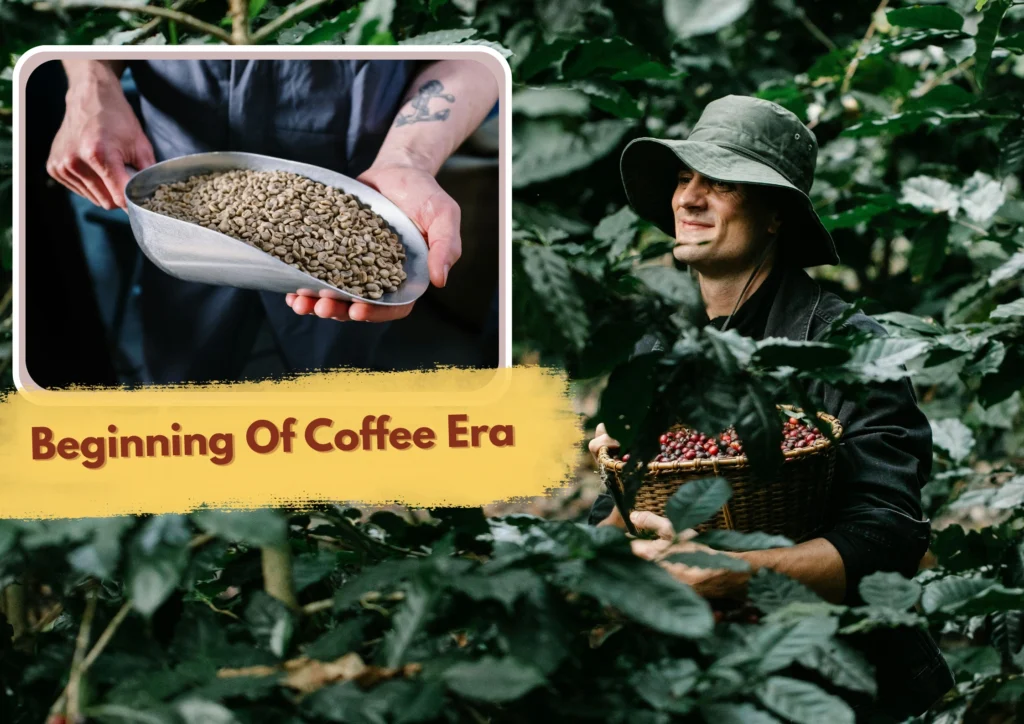
Word of this exciting drink quickly spread through the monasteries. Then it moved on to the Arabian Peninsula. This is the place where true coffee culture was born. Though this narrative may be more legend than actuality, historians concur the beginnings of coffee are in East Africa. A throwaway remark about those wild highlands of Ethiopia triggered a worldwide craving. It transformed unpretentious little berries into the world’s most popular drink. It’s remarkable how a fortuitous finding can blossom into a global craze.
How Coffee Beans Grow ?
Have you ever wondered how those tiny beans that fuel your mornings get to your cup? Coffee beans aren’t really beans at all — they’re the seeds of a fruit known as a coffee cherry. These red cherries grow on the coffee tree. It is a tropical evergreen shrub that thrives in warm climates. This happens usually at high altitudes with rich soil and ample rainfall. But the journey starts with small, fragrant white flowers, blooming on the coffee plant. After pollination the flower makes way for clusters of green cherries that over months ripen to a deep red.
Inside each cherry are almost always two coffee beans, facing each other. Harvesting is preferably done by hand. This is especially true in regions with rugged terrain. Handpicking ensures only the most ripe cherries are selected. Once they’re harvested, cherries are processed by many techniques. The techniques include drying or washing to peel away the outer layers. These processes expose the raw beans within. These beans are then dried, sorted and finally roasted to develop their characteristic flavor and aroma. It’s a slow, monitored process, but it’s how each coffee gets its rich depth and distinct personality. Coffee’s journey, from seed to sip, is nothing short of incredible.
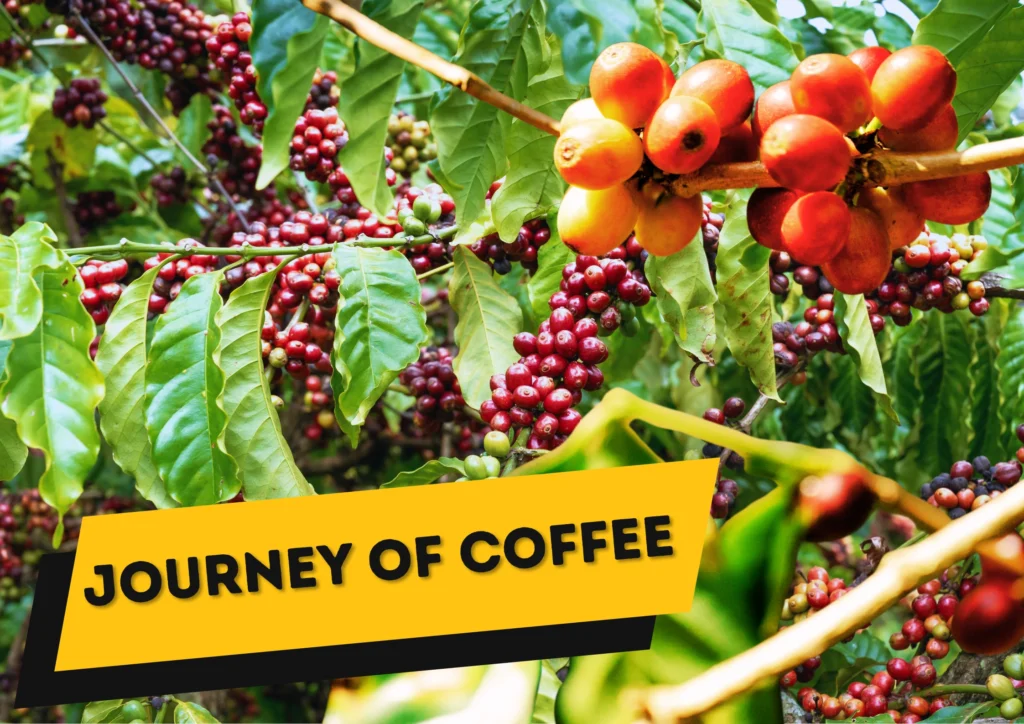
How Coffee Beans are Roasted?
Roasting is where the real magic happens in the journey of a coffee bean. It’s the same process that converts green beans into the pungent, spicy, brown beans we all know and love. Now, how are they roasted, the coffee beans? It all starts with the application of heat. The beans are loaded into a roasting machine. They’re continually tumbled and uniformly heated to temperatures between 370°F and 540°F (188°C to 282°C). As the beans warm, they undergo chemical transformations. The sugars caramelize. Oils release. That telltale deep aroma begins to emerge.
When roasting, you’ll get a “first crack,” a popping noise that indicates you’re getting light to medium roast beans. Allow it to go a little longer. You’ll hear a “second crack” when the roast darkens. The flavor becomes deeper and bolder. Roasters make adjustments to time and temperature. They achieve balance across different roast profiles—light, medium, or dark. Each profile offers a different experience for your taste buds.
Roasting is almost as much of a science as it is an art. Slight modifications can have a massive impact on flavor. Roasting reveals the personality of each bean. It ranges from nutty and floral, to bold and smoky. This process allows for that perfect cup for coffee lovers, every time.
Do Coffee Beans Need To Be Airtight?
That is correct. Storing a coffee bean in a tightly sealed container is one of the simplest things you can do. It is highly effective for retaining the taste and freshness of coffee. After your coffee beans have gone through the roasting process, they will emit aromatic oils. These oils promote the signature flavor in your brew. But here’s the thing — exposure to air, particularly oxygen, begins to degrade those delicate flavors. This is exactly why an airtight container isn’t just a storage option — it’s a flavor-saving must!
Air isn’t the only foe — light, heat and moisture can also accelerate the staling process. Your beans can lose their punch quickly in a non-airtight container. This change transforms your morning cup from rich and robust into a dull and disappointing experience. A good airtight container protects your beans from all those pernicious elements. It seals in their freshness for as long as possible.
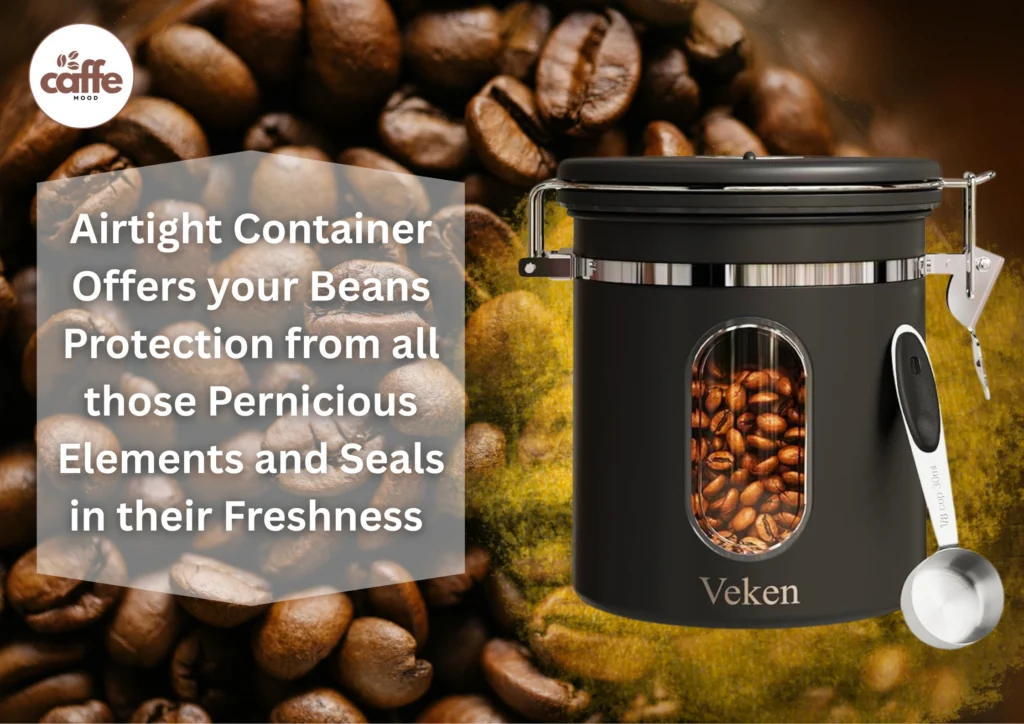
You might wonder if you should invest in a proper storage setup. This applies whether you’re an occasional drinker or a full-fledged coffee aficionado. An opaque, airtight container placed in a cool, dark environment is ideal. You deserve the best tasting cup possible and it all begins at home with how you treat those wonderful beans.
Should Coffee Beans Be Exposed To Light?
By far, the biggest enemy of fresh coffee is light exposure. So should coffee beans be exposed to light? The short answer is no. Light is similar to air and moisture. It can degrade the fragile compounds found in coffee beans. This happens especially with sunlight or fluorescent light. This creates oxidation, which robs the beans of its rich aroma and flavor, giving you a dull, lackluster brew. If your cup of coffee tastes flat, even when using quality beans, consider how you’re storing it. Assess your storage methods and locations.
That’s why it’s important to keep your beans in an opaque, airtight container. Store them in a cool, dark place, like a pantry. Do this rather than on the counter. It’s a small step that makes a big impact.” Because the idea is that this fresh-roasted goodness will be retained until it reaches your grinder. Whether you’re just a casual coffee drinker or a full-on coffee nerd, protect your beans from light. This ensures that every brew you make bursts with bold flavor and aroma. To make some beans you’ll feel proud of — because they deserve it!
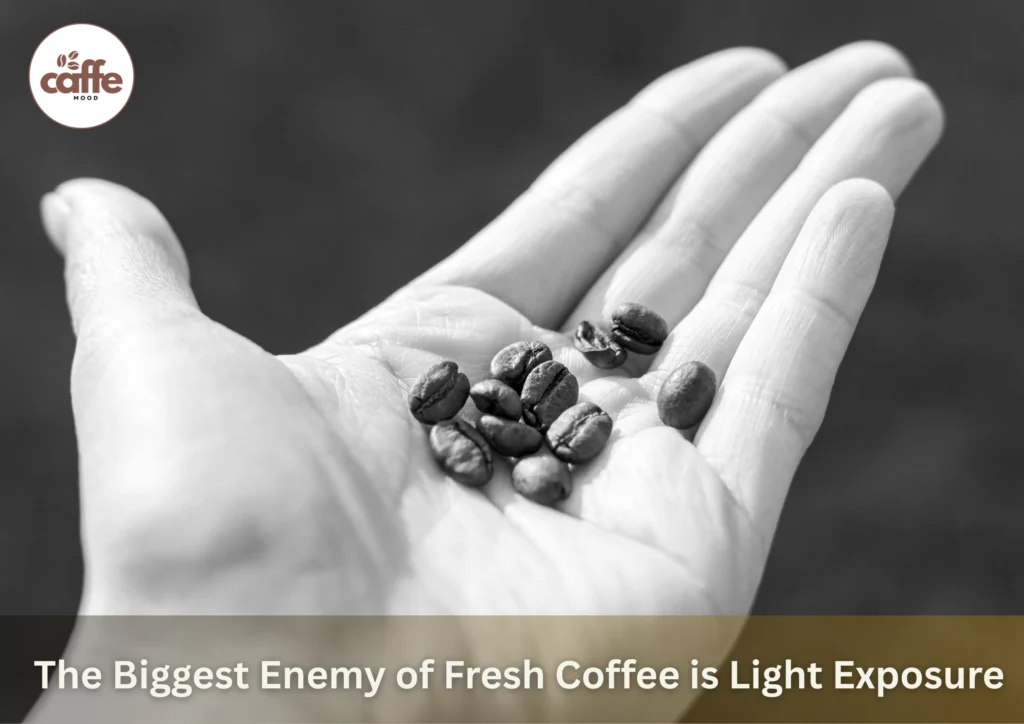
Do Coffee Beans Need to Breathe?
You may surprise yourself: the answer to “Do coffee beans need to breathe?” is yes — but only so far. Freshly roasted coffee beans emit carbon dioxide in a prep called degassing, and that’s where breathing enters into the picture. Immediately post-roast, beans need a little time for the excess gas to dissipate. This gas can otherwise interfere with the brewing process. It also produces an uneven flavor. That is also why lots of roasters employ one-way valve bags. These bags allow the gas to escape. They do not let air (or moisture) in. But this “breathing” period does not mean that beans should be exposed to open air for long.
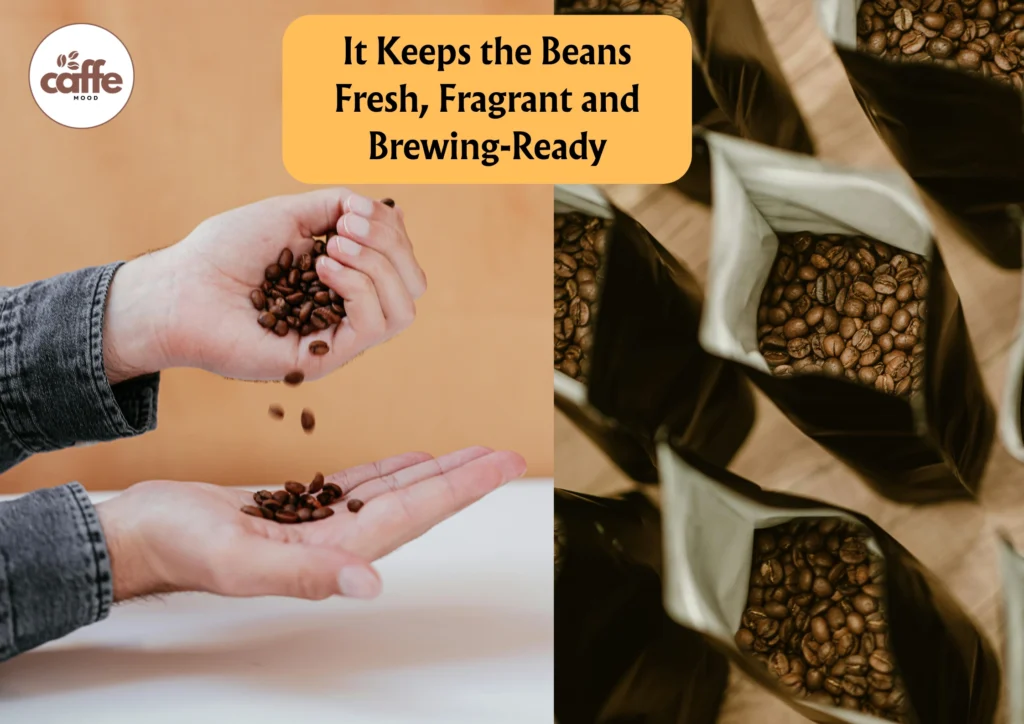
Within a few hours of degassing (generally 12–48 hours post-roast), oxygen begins to break down the aromatic oils. These oils and flavors give your coffee its nubile brilliance. The bottom line is: Yes, give your beans a little time to breathe immediately after roasting. Once that’s done, keep ’em sealed up tight! Right storage — like using airtight containers with a one-way valve — keeps the beans fresh, fragrant and brewing-ready. It’s about finding that balance: give them air to breathe, then keep them safe.”
The Four Main Types of Coffee Beans Uncovered
Four primary types of coffee beans are grown around the world, each with unique characteristics that contribute to its flavor. Understanding these different types is essential when choosing your beans. We shall get each type of coffee beans uncovered.
- Arabica Beans (Coffea arabica): Arabica beans are the most popular type of coffee bean. They make up approximately 60-70% of the world’s coffee production. They’re known for their smooth, rich flavor with hints of fruitiness and floral notes. Arabica coffee tends to have a slightly higher acidity compared to other types, contributing to a cleaner, brighter taste. These beans are generally grown at higher altitudes in regions such as Latin America, Ethiopia, and Kenya.
- Medium to Full Bodied with a Very Smooth Cocoa Toned Finish & Low Acidity
- Don Pablo’s Special Blend of Colombia, Guatemala, and Brazil
- Medium-Dark Roast – Whole Bean Arabica Coffee – GMO Free
- Robusta Beans (Coffea canephora): Robusta beans are the second most common type of coffee bean. Yet, they are generally considered less refined than Arabica. Robusta beans have a stronger, bolder flavor with a more pronounced bitterness. They contain more caffeine than Arabica beans, which contributes to their intense, punchy flavor. Robusta beans are often used in espresso blends to provide body and crema.
- Italian Dark Roast Whole Bean Coffee — Strong and charismatic, this blend is expertly dark-roasted to unlock bold, inten…
- Roasted To Perfection — Attention to detail is paramount for us, with coffee beans roasted for the perfect balance of in…
- Crafted for Coffee Lovers — Our superior whole bean coffee gives a rich aroma, packed with flavor. Grinding the coffee y…
- Liberica Beans (Coffea liberica): Less common but still notable. Liberica beans have a distinct, smoky flavor. This sets them apart from the other types. They have a more unusual aroma. It is often described as woody or fruity. Their flavor can be quite bold, with a hint of floral notes. These beans are grown in certain regions of the Philippines and Malaysia, and they’re known for their unique flavor profile.
- Ethiopian Excellence: Sourced from the famed Yirgacheffe region, known for its exceptional coffee craftsmanship.
- Distinct Flavor Profile: Medium-bodied with bright acidity, floral notes, and a subtle hint of citrus.
- Meticulous Processing: Beans are carefully handpicked and processed to preserve their exquisite qualities.
- Excelsa Beans (Coffea excelsa): Excelsa is a variety of Liberica beans. It’s often categorized separately because of its unique flavor. Excelsa beans are used to add complexity and depth to coffee blends. They have a tart, fruity flavor with a slightly sweet, almost spicy undertone. These beans are typically grown in Southeast Asia.
- Rare Excelsa Coffee Bean – Not Arabica or Robusta Discover Excelsa, a rare independent coffee species with a bold, compl…
- Vietnam-Grown, Spicy & Woody Medium Roast This Excelsa is grown in Vietnam’s highlands for a rich, spicy, woody profile….
- Naturally Lower Caffeine, No Crash Excelsa has about half the caffeine of Arabica, giving you a smoother, more mindful b…
How Roasting Affects Coffee Beans ?
The roasting process is one of the most important steps in determining the flavor of your coffee. Coffee beans start off green, and through roasting, they undergo chemical changes that transform their flavor, aroma, and color. The roast level—whether light, medium, or dark—has a significant impact on the taste of your coffee.
- Light Roast: Lightly roasted coffee beans retain much of their original flavors. These beans are more acidic and have fruity, floral notes. Light roasts are great for highlighting the unique characteristics of single-origin beans. Coffee enthusiasts often favor them to experience the natural flavors of the bean.
- Medium Roast: Medium roasts strike a balance between the bright acidity of a light roast. They also have the rich body of a dark roast. They often have a nutty or chocolatey flavor, with a rounded, balanced profile. Medium roasts are popular among coffee drinkers because they offer a satisfying, full-bodied taste without being too intense or bitter.
- Dark Roast: Dark roasts are characterized by their bold, robust flavor and a low level of acidity. As the beans roast for a longer period of time, they develop a smoky, almost burnt flavor. Dark roasts lose the unique characteristics of the original bean. The flavor is dominated by the roast itself. Popular dark roasts include French Roast and Espresso Roast.
- 𝐄𝐓𝐇𝐈𝐎𝐏𝐈𝐀𝐍 𝐅𝐋𝐀𝐕𝐎𝐑𝐄𝐃 𝐂𝐎𝐅𝐅𝐄𝐄: The natural sugars inside the Ethiopian Light Roast are in ideal harmony while roasted simply…
- 𝐒𝐖𝐄𝐄𝐓 𝐂𝐎𝐅𝐅𝐄𝐄: The wedding of those herbal flavors is a first-class balance of sweetness and spice, Blueberry, Vanilla, R…
- 𝐃𝐑𝐈𝐍𝐊 𝐈𝐍 𝐋𝐈𝐅𝐄: With a signature blend of tradition and innovation, Ethiopian ground coffee flavored is a premium blend t…
- TASTE: Brew the deliciously familiar taste from McCafé into the comfort of your own home. This medium roast blend is sim…
- ROAST: Medium Roast caffeinated coffee made with Arabica beans, and certified Orthodox Union Kosher
- RECYCLABILITY: Introducing McCafé Recyclable* K-Cup Pods. The same great taste, now made from recyclable material. *Chec…
- Contains one (1) Box of 75 Peet’s Major Dickason’s Blend Dark Roast Coffee Keurig K-Cup Pods – 100% Arabica Coffee
- Flavor and Roast: Dark Roast. Flavorful, robust, full-bodied. Developed by Mr. Peet and his most discerning customer, Ma…
- Brewing Methods: Peet’s single serve, K-Cup Pods are compatible with all Keurig K-Cup Brewers
Single-Origin vs. Blends: Which Should You Choose?
When it comes to coffee beans, you’ll encounter two primary types: single-origin and blends. Both have their merits. Understanding the difference will help you make the best choice for your taste preferences.
- Single-Origin Coffee: Single-origin coffee is sourced from one specific region, country, or even a single farm. These beans offer a unique flavor profile that reflects the environment in which they were grown. Factors like soil, altitude, climate, and processing methods all contribute to the final flavor. Single-origin coffees tend to highlight bright, distinctive flavors such as fruity, floral, or earthy notes.
- Blends: Blends are created by combining different types of coffee beans from various regions or farms. The goal of blending is to create a balanced flavor profile that highlights the best characteristics of the beans. Coffee roasters often blend beans with different roast levels to create a more complex and harmonious taste. Blends are a great option for those who prefer a more balanced and consistent flavor in their coffee.
How to Choose the Right Coffee Beans Uncovered for Your Brewing Method
Different brewing methods require different types of coffee beans and grind sizes. Understanding which beans to choose based on your brewing method can make all the difference in the final cup. Let’s get out correct roast method of coffee beans uncovered.
- Espresso: For espresso, you’ll need a darker roast with a fine grind. Espresso requires high pressure to extract the rich, bold flavor from the beans. Dark roasts are popular choices for espresso. Varieties such as Italian or French roasts provide a strong, full-bodied flavor with low acidity.
- Pour-Over: Pour-over brewing is a method that allows for precision and control over the extraction process. For pour-over coffee, a medium to light roast with a medium grind is ideal. This method highlights the unique characteristics of single-origin beans, and light roasts are often preferred for their bright, acidic flavors.
- French Press: For French press brewing, you’ll need a coarse grind and a medium to dark roast. The French press brewing method produces a full-bodied cup of coffee with rich flavor. A medium to dark roast works well with this method because it provides depth and complexity without being overly acidic.
- Cold Brew: Cold brew coffee is made by steeping coarsely ground coffee beans in cold water. This process takes an extended period, usually 12-24 hours. Medium to dark roasts are popular for cold brew because they provide a smooth, rich flavor with a mellow acidity.
Where to Buy High-Quality Coffee Beans?
When purchasing coffee beans, it’s important to choose reputable suppliers that offer high-quality beans. Let’s get the correct method for buying coffee beans uncovered. Consider buying from local roasters or specialty coffee shops that source their beans ethically and offer fresh, well-roasted products.
If you’re purchasing online, find companies that provide detailed sourcing information. They should also share the roast date and flavor profile of their beans.
Join Our Tiktok Channel For Latest Trends in Coffee;

Conclusion: Finding the Perfect Coffee Beans for Your Taste
The world of coffee beans is vast. There’s no one-size-fits-all answer when it comes to choosing the perfect beans for your cup.
Understanding the differences between Arabica, Robusta, Liberica, and Excelsa beans will help you. Knowing how roasting affects flavor is also important. This knowledge will assist you in selecting the right beans for your taste preferences.
The key to a great cup of coffee starts with high-quality beans. The right brewing method is also essential. It doesn’t matter if you prefer a light, fruity single-origin coffee or a rich, full-bodied espresso blend. Take the time to explore different types of beans and roasting levels to find the perfect coffee for your palate.
This Article Might Pull Your Interest:
- Exploring Coffee Beans: How Origin, Roast, and Processing Impact Flavor
- “Where to Buy Green Coffee Beans Online: Best Options for Fresh and High-Quality Beans”
- “Powerful Tips to Extend the Shelf Life of Coffee Beans & Avoid Stale Brews!”
- “Buy Fresh Coffee Beans Online: Must-Read Guide to Avoid Stale Beans!”
- “Unlock the Secrets for Coffee Espresso: How Origin, Roast & Processing Impact Flavor – A Complete Guide”

Frequently Asked Questions (FAQs)
1. What are the different types of Coffee Beans?
There are four main types of Coffee Beans: Arabica, Robusta, Liberica, and Excelsa. Each type has unique flavors, caffeine content, and growing conditions.
2. How do roast levels affect the flavor of Coffee Beans?
Roast levels—light, medium, and dark—impact the taste of Coffee Beans. Light roasts preserve acidity and fruity notes, medium roasts balance flavor and aroma, while dark roasts bring out bold, smoky flavors.
3. Which Coffee Beans are best for espresso?
For a rich and smooth espresso, medium to dark roast Coffee Beans with a blend of Arabica and Robusta varieties work best. They offer a strong body, balanced acidity, and a perfect crema.
4. How should I store Coffee Beans to keep them fresh?
To maintain the freshness of Coffee Beans, store them in an airtight container, away from light, heat, and moisture. Vacuum-sealed or opaque containers help preserve the flavor longer.
5. What’s the difference between single-origin and blended Coffee Beans?
Single-origin Coffee Beans come from one region, offering distinct and pure flavors, while blended Coffee Beans combine beans from different areas to create a balanced and complex taste profile.



